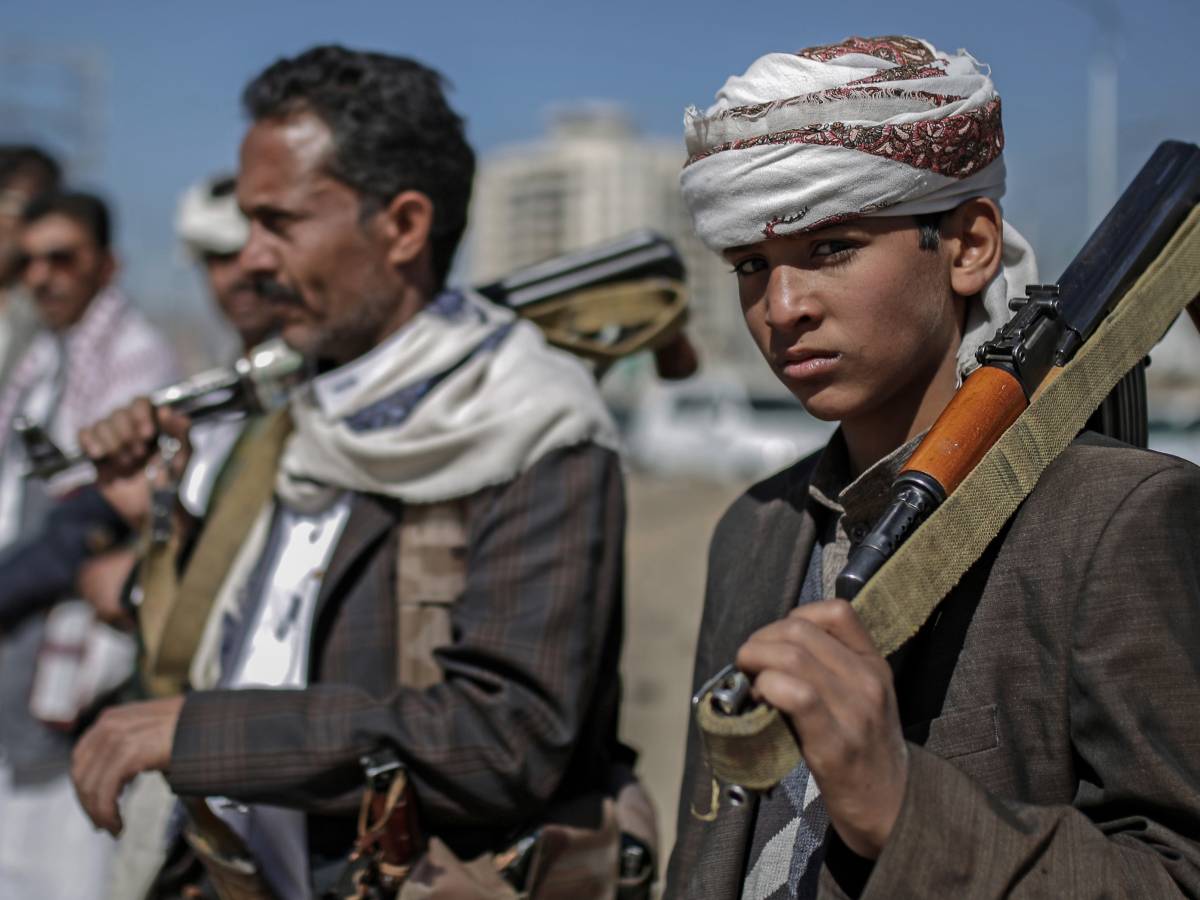“Allah is great, death to the United States and Israel” is the rallying cry printed on the flags of the Houthis, the Janissaries of Tehran in Yemen. An armed, political and religious group that is now the size of a mini-army with artillery, tanks, drones and missiles capable of hitting a target almost two thousand kilometers away. The Houthis can mobilize 120,000 men near the Red Sea. General Hossein Salemi of Iran's Revolutionary Guards confirmed that it was “a copy of Hezbollah (Lebanon's armed Shiite party) in a strategic area.” It is no coincidence that its political leader Abdel-Malek Al-Houthi has a reverence for Hassan Nasrallah, the leader of the Lebanese Janissaries in Iran.
The Houthi clan was based in the north and had a stronghold in the city of Sadah. In 2004, Yemeni President, Sunni Ali Abdullah Saleh, with the support of the Saudis, launched a hunt against the Shiites who had founded the Ansar Allah movement, the Supporters of God, and killed their leader Hussein al Houthi. His death marked the beginning of the armed uprising that would split the country in two and trigger a bloody and devastating war. The Houthis are not only advancing, but are capturing bases and arsenals full of weapons and ammunition. The conflict, with direct intervention by Saudi Arabia and support for Shiite militiamen by Iran, caused 150,000 deaths, starvation and cholera. The Houthis have controlled the capital Sanaa and much of the country since 2014, while the self-proclaimed “legitimate” government retreats to Aden in the south. There is still a ceasefire in effect. The Houthis have now become an army thanks to training from Hezbollah and military technology provided by the Iranians.
The Shiites in power in the capital have set up real missile, drone and missile factories in Sanaa and Sadha and are expecting the key seaport of Al Husdaydah to be bombed by the Allies. After the Israeli invasion of Gaza, sparked by the Hamas massacre on October 7, General Yahya Saree announced that the Houthi army will “prevent Israeli ships from sailing in the Red Sea.” And the Shiites began firing rockets at Eilat, the Jewish state's southern port 1,800 kilometers away. Thanks to Iranian technicians, the Houthis have developed kamikaze drones such as the Qasef 2 K, which can strike within a radius of 200 kilometers in the Red Sea. The Sammad 4 unmanned aerial vehicle is more sophisticated and drops a bomb. The Shiites also developed the Quds 2 cruise missile from the Arabic name for Jerusalem. And above all, the Burkhan with a range of almost 2,000 kilometers.
On the ground, the Houthy artillery has developed missiles with increasingly sophisticated guidance systems, such as the Badr-F and the new Sair, Qasim and Nakal versions, which have a margin of error on aim of three meters. The incredible thing is that then-President Donald Trump only added the Houthis to the terrorist list in January 2020, a day before he was replaced by Joe Biden. The new occupant of the White House immediately removed the Shiite group from the blacklist.
In addition to infantry units and tank units, the Shiite army uses special forces that boarded an Israeli shipowner's merchant ship in the Red Sea by lowering themselves from a helicopter. A movie-like operation made possible by intelligence from the Behshad, an Iranian spy ship in the middle of the Red Sea, north of the Strait of Bab el-Mandeb, the hub of global maritime trade.

